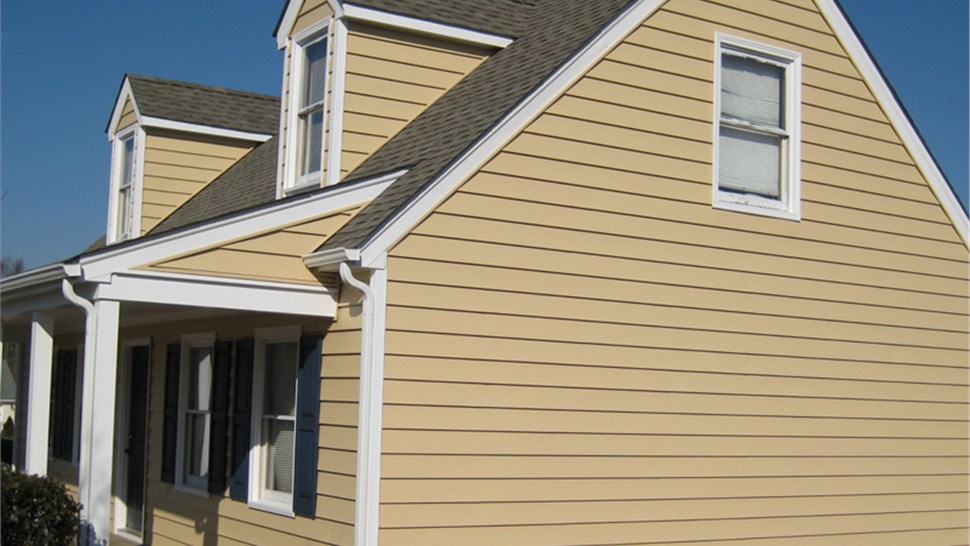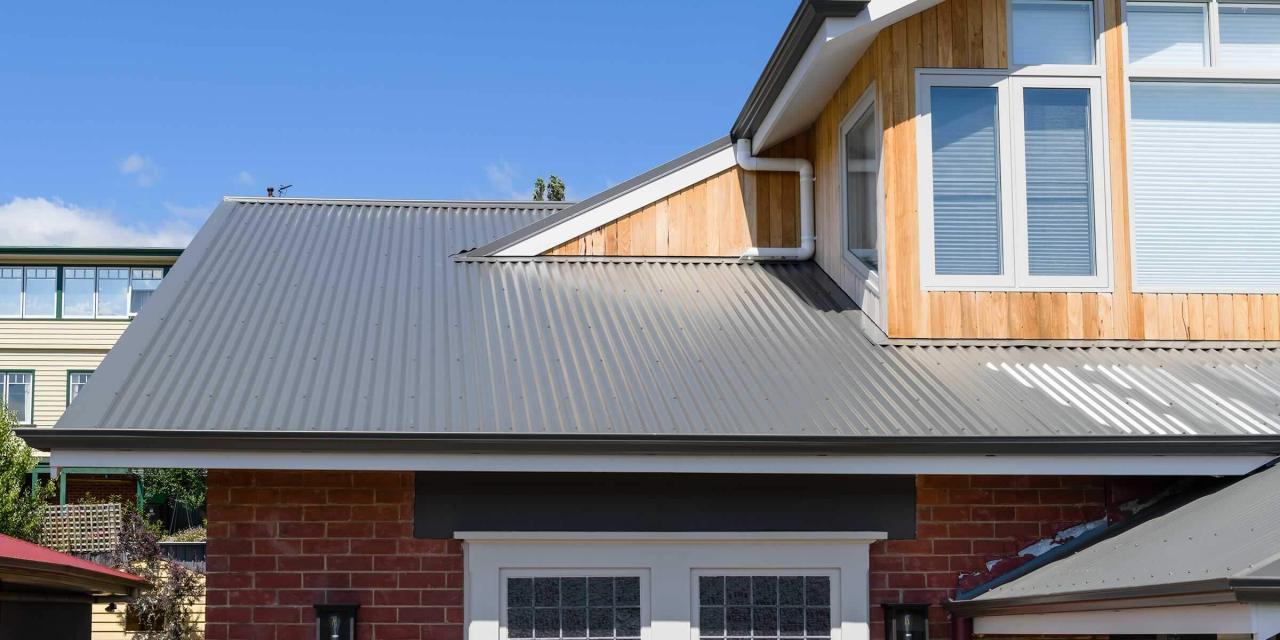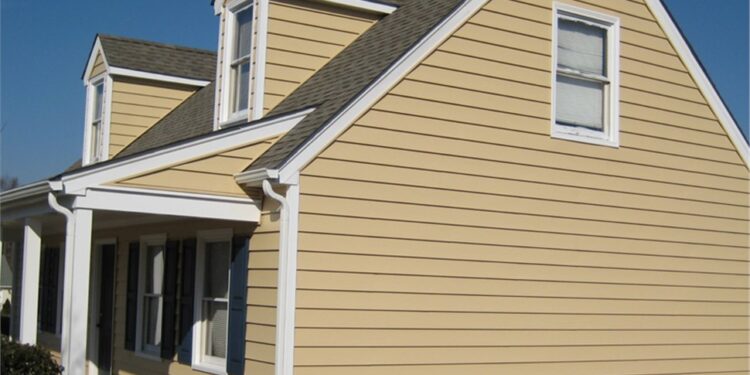Metal siding contractors play a crucial role in construction projects, offering a range of services that are essential for achieving a durable and visually appealing exterior. This guide delves into the world of metal siding contractors, exploring the various materials, installation techniques, maintenance tips, and more.
Overview of Metal Siding Contractors

Metal siding contractors play a crucial role in construction projects, specializing in the installation and maintenance of metal siding for residential, commercial, and industrial buildings. Their expertise ensures that the exterior of a structure is not only visually appealing but also durable and weather-resistant.
Services Offered by Metal Siding Contractors
Metal siding contractors offer a range of services to meet the specific needs of their clients, including:
- Installation of metal siding panels
- Repair and replacement of damaged siding
- Insulation and weatherproofing
- Custom design and fabrication
- Maintenance and cleaning services
Importance of Hiring Skilled Metal Siding Contractors
Skilled metal siding contractors have the expertise and experience to ensure that the installation is done correctly, preventing issues such as leaks, rust, or improper fitting. Their attention to detail and knowledge of industry best practices can save time and money in the long run.
Metal siding contractors also have access to high-quality materials and tools, ensuring a professional finish that enhances the overall aesthetic of a building. Hiring skilled contractors for a project can ultimately increase the property's value and longevity.
Types of Metal Siding Materials

Metal siding is a popular choice for contractors due to its durability and aesthetic appeal. There are several types of metal siding materials commonly used in construction projects. Let's explore some of the most common options and factors to consider when choosing the right metal siding material for a project.
Steel Siding
Steel siding is one of the most durable options available, offering high resistance to harsh weather conditions like wind, rain, and snow. It is also relatively low maintenance and can be painted in a variety of colors to suit the aesthetic preferences of the homeowner.
Aluminum Siding
Aluminum siding is lightweight, making it easy to install and handle. It is resistant to corrosion and rust, making it a popular choice for coastal areas or regions with high humidity. However, aluminum siding may dent more easily than other materials.
Zinc Siding
Zinc siding is known for its longevity and resistance to corrosion. It develops a natural patina over time, giving it a unique and attractive appearance. While it may be more expensive upfront, zinc siding requires little maintenance and can last for decades.
Copper Siding
Copper siding is prized for its luxurious appearance and natural resistance to corrosion. Over time, copper develops a distinctive green patina, adding character to the building. However, copper is one of the most expensive metal siding materials on the market.
Factors to Consider
When choosing the right metal siding material for a project, it's essential to consider factors such as the climate of the area, the desired aesthetic, maintenance requirements, and budget constraints. Each type of metal siding material has its own unique characteristics and benefits, so it's crucial to weigh these factors carefully before making a decision.
Installation Techniques
Installing metal siding requires a specific set of steps to ensure a proper and durable finish. Preparing the surface beforehand is crucial to the success of the installation process. Let's delve into the typical steps involved, best practices for surface preparation, and common challenges faced by contractors during the installation process.
Typical Steps for Installing Metal Siding
- Measure and cut the metal siding panels to fit the dimensions of the building.
- Prepare the surface by cleaning it thoroughly to remove any dirt, debris, or old siding.
- Install a moisture barrier to protect the building from water damage.
- Begin attaching the metal siding panels starting from the bottom and working your way up.
- Overlap the panels to ensure a tight seal and secure them in place with nails or screws.
- Finish the installation by adding trim pieces around windows, doors, and corners for a polished look.
Surface Preparation Best Practices
- Inspect the surface for any damage or rot and make necessary repairs before installing metal siding.
- Clean the surface thoroughly to remove any mold, mildew, or other contaminants that could affect the adhesion of the siding.
- Apply a primer to the surface to improve the bond between the metal siding and the building.
- Ensure the surface is level and smooth to prevent any warping or buckling of the metal siding panels.
Common Challenges and Solutions
- Uneven surfaces can make installation difficult. Use shims or leveling compounds to create a smooth base for the metal siding.
- High winds during installation can be a challenge. Secure the panels properly and consider installing wind-resistant siding clips.
- Improperly installed moisture barriers can lead to water damage. Double-check the installation of the barrier and make any necessary adjustments.
- Corrosion of metal siding panels over time can be a concern. Choose high-quality, corrosion-resistant materials and ensure proper maintenance.
Maintenance and Repair
Metal siding is a durable and low-maintenance option for homes and buildings. However, regular maintenance is essential to ensure its longevity and appearance. Here are some tips on maintaining metal siding to prolong its lifespan:
Tips for Maintaining Metal Siding
- Regularly clean the siding with a mixture of mild soap and water to remove dirt, debris, and mold.
- Inspect the siding for any signs of damage, such as dents, scratches, or rust spots, and address them promptly.
- Trim any overhanging branches or vegetation near the siding to prevent damage from rubbing or impact.
- Check the caulking and sealing around windows, doors, and joints to ensure they are intact and reseal if necessary.
- Consider applying a fresh coat of paint or protective finish every few years to maintain the siding's appearance and protection.
Metal siding, like any material, may encounter issues that require repair over time. Common problems include dents, scratches, rust, loose panels, or damaged fasteners. While some minor repairs can be done DIY, more extensive damage may require the expertise of metal siding contractors.
Repairing Damaged Metal Siding
- Assess the extent of the damage and determine if it can be repaired or if replacement is necessary.
- For minor dents or scratches, use a rubber mallet or sandpaper to gently tap out the imperfections or smooth the surface.
- For rust spots, sand the affected area, apply a rust converter, and repaint the section to prevent further corrosion.
- Secure loose panels or fasteners by tightening screws or replacing damaged components to ensure the siding remains in place.
- If the damage is extensive or beyond your capabilities, contact metal siding contractors to assess the situation and provide professional repair services.
Last Recap

In conclusion, metal siding contractors are the unsung heroes of any construction project, ensuring that the exterior not only looks great but also stands the test of time. By understanding their role and the intricacies of working with different materials, you can make informed decisions for your next project.
Frequently Asked Questions
What services do metal siding contractors typically offer?
Metal siding contractors usually provide services such as installation, repair, and maintenance of metal siding for residential and commercial buildings.
How do I choose the right metal siding material for my project?
Consider factors like durability, aesthetic appeal, cost, and maintenance requirements when selecting a metal siding material for your project.
What are some common challenges faced during metal siding installation?
Common challenges include ensuring proper surface preparation, dealing with weather conditions, and achieving a seamless finish.
How can I prolong the lifespan of my metal siding?
Regular maintenance tasks like cleaning, inspecting for damage, and addressing issues promptly can help extend the lifespan of your metal siding.
When should I seek professional help for repairing damaged metal siding?
If you notice significant damage, such as holes, dents, or corrosion, it's best to contact a professional metal siding contractor for repairs.


